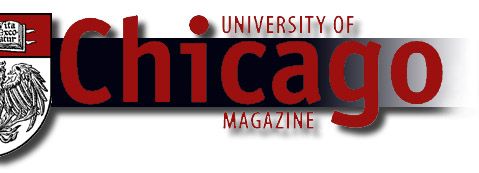|
As an amateur potter
shaping clay or as a professional linguist studying gestures, U
of C professor Susan Goldin-Meadow is fascinated by what the hands
can create.
Goldin-Meadow and project researcher Carolyn Mylander reported
in the January 15 issue of Nature that the human brain has an inherent
ability to organize symbols of language and that structured human
communication is inevitable, re-gardless of cultural differences.
They based their conclusions on a study of deaf children in the
United States and Taiwan who had independently developed similar
gesture systems—systems that reflect the language structures of
neither English nor Mandarin.
“I was interested in the question of where language comes from
and what role a language model might play in a child’s acquisition
of language,” says Goldin-Meadow, a 48-year-old professor in psychology,
education, the Center for East Asian Studies, and the College. “While
a child in normal circumstances gets lots of input, I wanted to
see what a child could do without so much input—if the child would,
in a sense, reinvent the wheel.”
Goldin-Meadow, who joined the Chicago faculty in 1976 after receiving
a Ph.D. in psychology from the University of Pennsylvania, knew
from earlier research that American deaf children who had had no
contact with each other developed similar signals. But she wanted
to study a cross-cultural example and to determine whether the children’s
gestures resembled natural language.
“You can get your points across by drawing pictures or taking your
mom’s hand and dragging her to the refrigerator and whining,” she
explains. “But I was interested in something a bit more symbolic.”
First, the researchers had to find subjects with little exposure
to conventional ways of communicating. They turned to deaf children
whose hearing losses were so severe that they could not acquire
the spoken language around them, and whose hearing parents had not
yet taught them sign language.
They then analyzed some 80 hours of videotape that captured more
than 10,000 individual gestures between eight selected children
and their mothers. Three children lived in Chicago, one in Philadelphia,
and four in Taipei, chosen because mothers there interact much differently
with their children than do those in America.
All of the children were enrolled in schools that advocated training
in sound sensitivity, lip reading, and speech production, and they
were observed twice between the ages of 3 years, 8 months and 4
years, 11 months.
The researchers found that the pre-schoolers in both countries
developed complex gesture sentences on their own. While two-gesture
sentences were the most common in both cultures, all of the children
produced sentences up to 13 gestures long, says Goldin-Meadow.
They typically put the object of the verb before the verb—a grammar
different from that of both English and Mandarin, she says. For
example, she explains, if a deaf child gestured “boy hit,” the child
likely meant that the boy was hit rather than that he was the hitter.
Educators can use this knowledge, she says, as a base for further
instruction.
Observes Goldin-Meadow, “Given the salient differences between
Chinese and American cultures, the structural similarities in the
children’s gesture systems are striking.”
—Betsy Rossen Elliot
|



